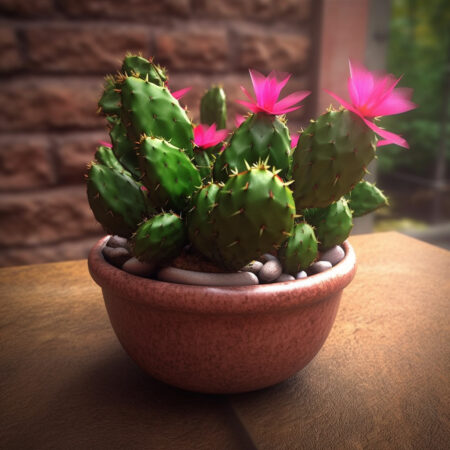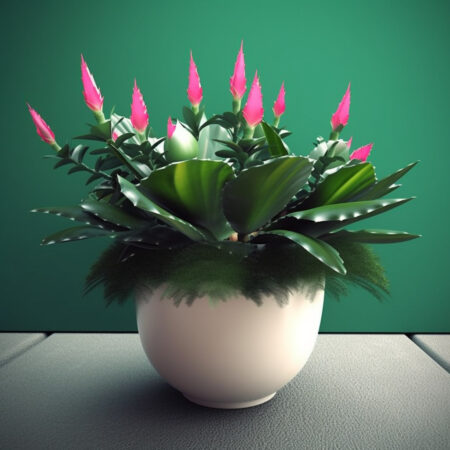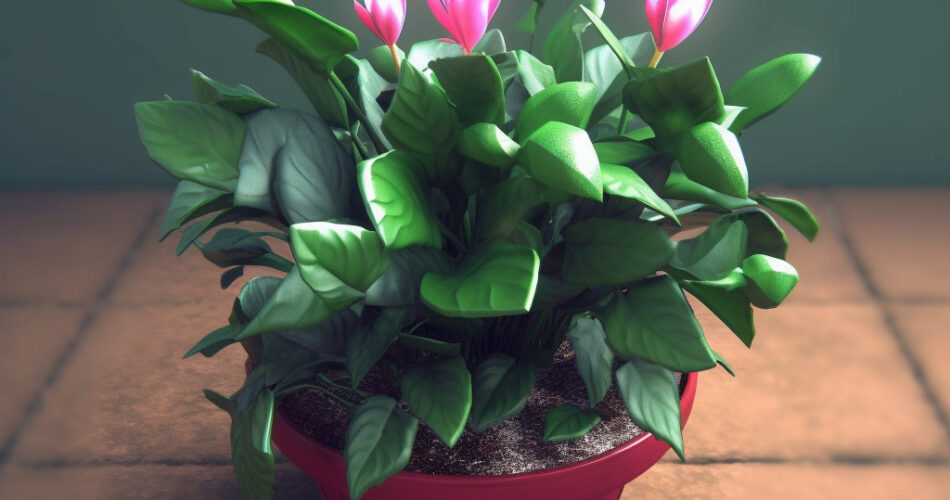Key Takeaways:
- Schlumbergera truncata, also known as Thanksgiving cactus or Zygocactus, is a popular succulent houseplant native to Brazil.
- There are various common names and varieties of Schlumbergera truncata, each with its own unique flower color and shape.
- The plant requires bright but indirect light, moderate temperatures, and regular watering with well-draining soil.
- Common pests and diseases that can affect Schlumbergera truncata include mealybugs, aphids, fungal diseases, and root rot.
- Schlumbergera truncata can be propagated through stem cuttings, air layering, or division of established plants.
- Proper care and optimal growing conditions can enhance the flowering and overall health of Schlumbergera truncata.
- Schlumbergera truncata holds cultural significance and has been the subject of impressive records and collections.
- Frequently asked questions about watering, outdoor cultivation, flowering, and toxicity are addressed in the article.
Introduction to Schlumbergera truncata
An Overview of Schlumbergera truncata
Schlumbergera truncata, also known as Zygocactus or crab cactus, is a popular succulent plant that belongs to the Schlumbergera family. It is native to the coastal mountains of southeastern Brazil and is widely cultivated as a houseplant for its beautiful flowers and unique foliage. This guide will provide a comprehensive overview of Schlumbergera truncata, including its history, common names, and unique characteristics.
The History and Origin of Zygocactus
The history of Schlumbergera truncata can be traced back to the early 19th century when it was discovered in the mountains of Brazil by European botanists. The plant was first brought to Europe and later to the United States, where it gained popularity as a houseplant. Over the years, breeders have developed various cultivars of Schlumbergera truncata, resulting in a wide range of flower colors and forms.
Common Names and Varieties
Schlumbergera truncata is commonly known by several names, including Thanksgiving cactus, crab cactus, and Zygocactus. These names are derived from the plant’s blooming period, which usually coincides with the Thanksgiving and Christmas holidays. There are also several popular varieties of Schlumbergera truncata, such as ‘Christmas Flame’, ‘Holiday Dancer’, and ‘Golden Charm’, each with its own unique flower color and shape.
The Unique Characteristics of Schlumbergera truncata
One of the unique characteristics of Schlumbergera truncata is its flattened, segmented stems that resemble crab claws. These stems are composed of succulent green segments that store water, allowing the plant to survive in dry conditions. Another notable feature of Schlumbergera truncata is its vibrant and showy flowers, which come in various colors including white, pink, red, and orange. The flowers usually have long, tubular petals and bloom from the tips of the stems.

Care and Maintenance of Zygocactus
Lighting Requirements
Schlumbergera truncata thrives in bright but indirect light. It is best to place the plant near a window where it can receive a few hours of morning sun and bright, indirect light throughout the day. Avoid placing it in direct sunlight as this can scorch the leaves and flowers.
Temperature and Humidity Considerations
Zygocactus prefers moderate temperatures between 60°F and 70°F (15°C to 21°C). It is important to avoid exposing the plant to extreme temperature fluctuations, as this can cause bud drop and leaf damage. In terms of humidity, Schlumbergera truncata does well in average household humidity levels, but it can benefit from occasional misting during dry winter months.
Watering and Fertilizing Tips Zygocactus
Proper watering is crucial for the health of Schlumbergera truncata. The plant prefers to be kept evenly moist but not waterlogged. Water thoroughly when the top inch of soil feels dry, allowing excess water to drain away. During the active growing season, which is typically spring and summer, it is important to fertilize Thanksgiving cactus every two to four weeks with a balanced, water-soluble fertilizer diluted to half strength.
Pruning and Propagation Techniques Zygocactus
Pruning is not usually necessary for Zygocactus, but if the plant becomes leggy or overgrown, it can be pruned back in early spring. The pruned stems can be used for propagation. Schlumbergera truncata can be propagated through stem cuttings, which should be taken in spring or early summer and allowed to dry for a few days before planting in well-draining soil. The cuttings will root and develop into new plants within a few weeks.
Common Pests and Diseases of Schlumbergera truncata
Identifying and Treating Mealybugs on Schlumbergera truncata
Mealybugs are common pests that can infest Schlumbergera truncata. These small, white insects feed on the plant sap and produce a cotton-like substance that can cover the stems and leaves. To treat mealybug infestations, it is important to isolate the affected plant and remove the insects manually using a cotton swab dipped in rubbing alcohol. Regularly inspecting the plant for signs of mealybugs and taking prompt action is key to preventing severe infestations.
Preventing and Managing Fungal Diseases
Fungal diseases, such as stem rot and leaf spots, can occur in Thanksgiving cactus if the plant is exposed to excessive moisture or poor air circulation. To prevent fungal diseases, it is important to water the plant from the bottom, avoiding wetting the leaves and stems. Providing good air circulation and avoiding overcrowding of plants can also help prevent fungal infections. If fungal diseases do occur, affected parts should be removed, and the plant should be treated with a fungicide.
Dealing with Aphid Infestations
Aphids are another common pest that can affect Zygocactus. These small, soft-bodied insects feed on the plant sap and can cause stunted growth and distorted leaves. To control aphid infestations, it is important to regularly inspect the plant and remove the insects manually using a strong stream of water or insecticidal soap. Natural predators, such as ladybugs, can also help keep aphid populations in check.
Recognizing and Controlling Root Rot in Thanksgiving Cactus
Root rot is a common problem in Schlumbergera truncata, especially if the plant is kept in excessively wet conditions. Overwatering and poor drainage can lead to root rot, which is characterized by yellowing leaves, wilting, and root decay. To prevent root rot, it is important to water the plant sparingly and ensure that the pot has drainage holes. If root rot occurs, it is necessary to repot the plant in fresh, well-draining soil and trim away any affected roots.

Schlumbergera truncata vs. Schlumbergera x buckleyi: A Comparison
Understanding the Differences in Appearance and Growth Habits
Schlumbergera truncata and Schlumbergera x buckleyi are two closely related species of holiday cacti. While they share some similarities, there are also notable differences in their appearance and growth habits. Schlumbergera truncata has flattened, crab-like stems with pointed teeth along the edges, while Schlumbergera x buckleyi has rounded, scalloped stems. Schlumbergera truncata tends to have a more compact and upright growth habit, while Schlumbergera x buckleyi has a more trailing or cascading growth habit.
Comparing Flowering Patterns and Colors
Both Schlumbergera truncata and Schlumbergera x buckleyi are known for their beautiful flowers, but there are some differences in their flowering patterns and colors. Schlumbergera truncata typically blooms in late fall or early winter, while Schlumbergera x buckleyi blooms a bit later, usually in mid to late winter. In terms of flower colors, Schlumbergera truncata flowers can be white, pink, red, or orange, while Schlumbergera x buckleyi flowers are usually shades of pink or purple.
Assessing the Hardiness and Adaptability of Each Species
Both Schlumbergera truncata and Schlumbergera x buckleyi are tropical plants that are adapted to thrive in indoor environments. However, Schlumbergera truncata is generally considered to be slightly more cold-tolerant and adaptable to a wider range of growing conditions. It can withstand temperatures as low as 40°F (4°C) for short periods, making it suitable for outdoor cultivation in mild climates. Schlumbergera x buckleyi, on the other hand, is more sensitive to cold temperatures and is best grown indoors or in protected outdoor areas.
Exploring the Availability and Popularity of Schlumbergera truncata and Schlumbergera x buckleyi
Both Schlumbergera truncata and Schlumbergera x buckleyi are widely available as houseplants and are popular choices for indoor gardening. However, Schlumbergera truncata is generally more readily available in garden centers and nurseries, especially during the holiday season. It is also more commonly grown and recognized by the general public. Schlumbergera x buckleyi, although less widely available, is highly sought after by plant enthusiasts for its unique beauty and slightly different growth habits.
Propagation Methods for Schlumbergera truncata
Growing Zygocactus from Seeds
Propagating Schlumbergera truncata from seeds is possible but can be a lengthy process. The seeds need to be collected from mature fruits and then sown in a well-draining soil mix. It can take several weeks or even months for the seeds to germinate, and it may take several years for the plants to reach maturity and start flowering.
Utilizing Stem Cuttings to Propagate This Cactus
Stem cuttings are a more common and reliable method of propagating this cactus. To propagate from stem cuttings, select healthy stems and cut them into segments of about 3-4 segments each. Allow the cuttings to dry for a few days to form calluses, then plant them in a well-draining soil mix. Keep the soil lightly moist and provide bright, indirect light. The cuttings will root and develop into new plants within a few weeks to a few months.
Air Layering as a Propagation Technique
Air layering is another propagation technique that can be used for Zygocactus. This method involves creating a wound on a healthy stem, wrapping it with moist sphagnum moss, and covering it with plastic wrap to create a humid environment. Roots will form at the wound site, and once they are well-established, the rooted section can be cut off and potted as a new plant.
Dividing Established Schlumbergera truncata Plants
Dividing established Schlumbergera truncata plants is another option for propagation. This method is best done during repotting when the plant has become overcrowded or outgrown its current container. Carefully remove the plant from its pot and gently separate the segments, making sure each segment has roots attached. Plant the divided segments in individual pots with well-draining soil, and provide them with the same care as mature plants.
Schlumbergera truncata as a Houseplant: Tips and Tricks
Choosing the Right Potting Mix for Zygocactus
The right potting mix is essential for the health and well-being of Schlumbergera truncata. A well-draining soil mix that retains some moisture is ideal. A mix of peat moss, perlite, and coarse sand or orchid bark works well for Schlumbergera truncata. Avoid using heavy, water-retentive soils, as they can lead to root rot.
Creating Optimal Indoor Growing Conditions
To create optimal indoor growing conditions for Schlumbergera truncata, place the plant in a location that receives bright, indirect light. Avoid direct sunlight, as it can scorch the leaves. Maintain a moderate temperature between 60°F and 70°F (15°C to 21°C) and provide average household humidity levels. Avoid placing the plant near drafts or heat sources, as this can cause stress and damage to the plant.
Enhancing Flowering and Encouraging Blooms
To enhance flowering and encourage blooms in Schlumbergera truncata, it is important to provide the plant with a period of cool temperatures and shorter daylight hours in the fall. This can be achieved by placing the plant in a cooler location, such as a basement or a room with reduced lighting, for about 6-8 weeks. During this period, water sparingly to simulate the plant’s natural dormancy period. After this cool period, return the plant to its normal growing conditions, and it should start producing buds and blooming.
Addressing Common Challenges of Growing It Indoors
Growing Schlumbergera truncata indoors can come with some challenges. One common challenge is overwatering, which can lead to root rot. It is important to allow the soil to dry slightly between waterings and avoid keeping the plant in standing water. Another challenge is insufficient light, which can result in weak growth and lack of blooms. If the plant is not receiving enough light, consider supplementing with artificial grow lights to ensure adequate light levels.
Fun Facts and Trivia about Schlumbergera truncata
The Symbolic Meaning and Cultural Significance of Schlumbergera truncata
Schlumbergera truncata holds symbolic meaning and cultural significance in various cultures. In Brazil, where the plant is native, it is associated with the Christmas season and is often used as a decorative plant during the holidays. In some cultures, it is believed to bring good luck and prosperity to the household. The plant has also been used in traditional medicine for its potential health benefits.
Unusual and Rare Varieties of Schlumbergera truncata
While the most commonly available varieties of Schlumbergera truncata have white, pink, red, or orange flowers, there are also some unusual and rare varieties worth mentioning. These include varieties with variegated foliage, double flowers, or unique flower forms. These rare varieties are highly sought after by collectors and plant enthusiasts.
Record-Breaking Schlumbergera truncata Plants and Flowers
Zygocactus has been the subject of some record-breaking plants and flowers. The largest recorded plant measured over 6 feet (1.8 meters) in height and had hundreds of flowers. The largest flower on record measured over 4 inches (10 centimeters) in diameter. These impressive specimens showcase the potential size and beauty that this cactus can achieve under optimal growing conditions.
Famous Schlumbergera truncata Enthusiasts and Collections
There are several famous enthusiasts and collectors of this cacti who have contributed to the popularity and recognition of the plant. These individuals often have extensive collections of rare and unique varieties and have made significant contributions to the breeding and cultivation. Their passion and dedication have helped to expand the range of available varieties and promote interest in this captivating plant.
Schlumbergera truncata: Frequently Asked Questions (FAQs)
How often should I water my Zygocactus?
Watering frequency for Schlumbergera truncata depends on various factors such as temperature, humidity, and potting mix. As a general guideline, water the plant when the top inch of soil feels dry. Avoid overwatering, as this can lead to root rot.
Can I grow Zygocactus outdoors?
Schlumbergera truncata is typically grown as an indoor plant, but it can be grown outdoors in mild climates. It prefers a partially shaded location with protection from direct sunlight and extreme temperatures.
What should I do if my Zygocactus stops flowering?
If your Schlumbergera truncata stops flowering, it may be due to a lack of proper care or environmental conditions. Ensure the plant is receiving adequate light, temperature, and humidity. Additionally, provide a cool period of reduced lighting and water during the fall to encourage blooming.
Are there any toxic substances in Schlumbergera truncata?
Schlumbergera truncata is considered non-toxic to humans and pets. However, it is always a good practice to keep plants out of reach of children and pets to prevent accidental ingestion.
Question: How do I choose the right potting mix for Schlumbergera truncata?
Answer: The right potting mix is essential for the health and well-being of Zygocactus. A well-draining soil mix that retains some moisture is ideal. A mix of peat moss, perlite, and coarse sand or orchid bark works well for this cactus. Avoid using heavy, water-retentive soils, as they can lead to root rot.
Question: How can I enhance flowering and encourage blooms in Schlumbergera truncata?
Answer: To enhance flowering and encourage blooms, it is important to provide the plant with a period of cool temperatures and shorter daylight hours in the fall. This can be achieved by placing the plant in a cooler location, such as a basement or a room with





Comments